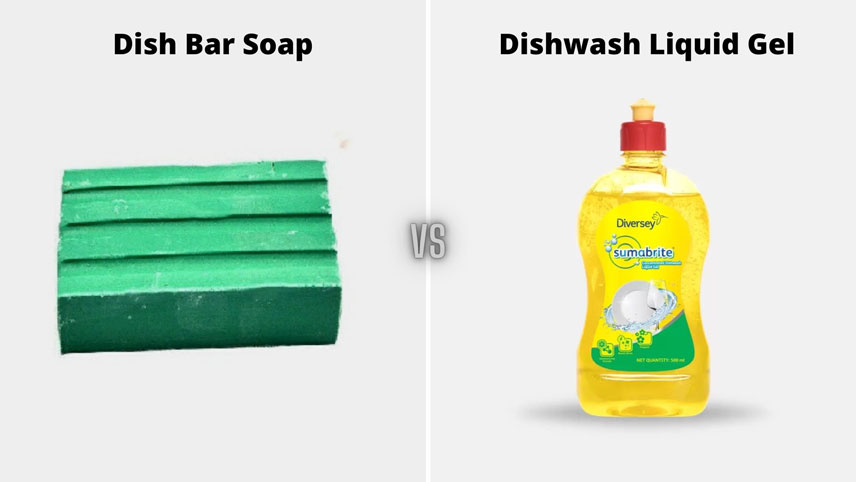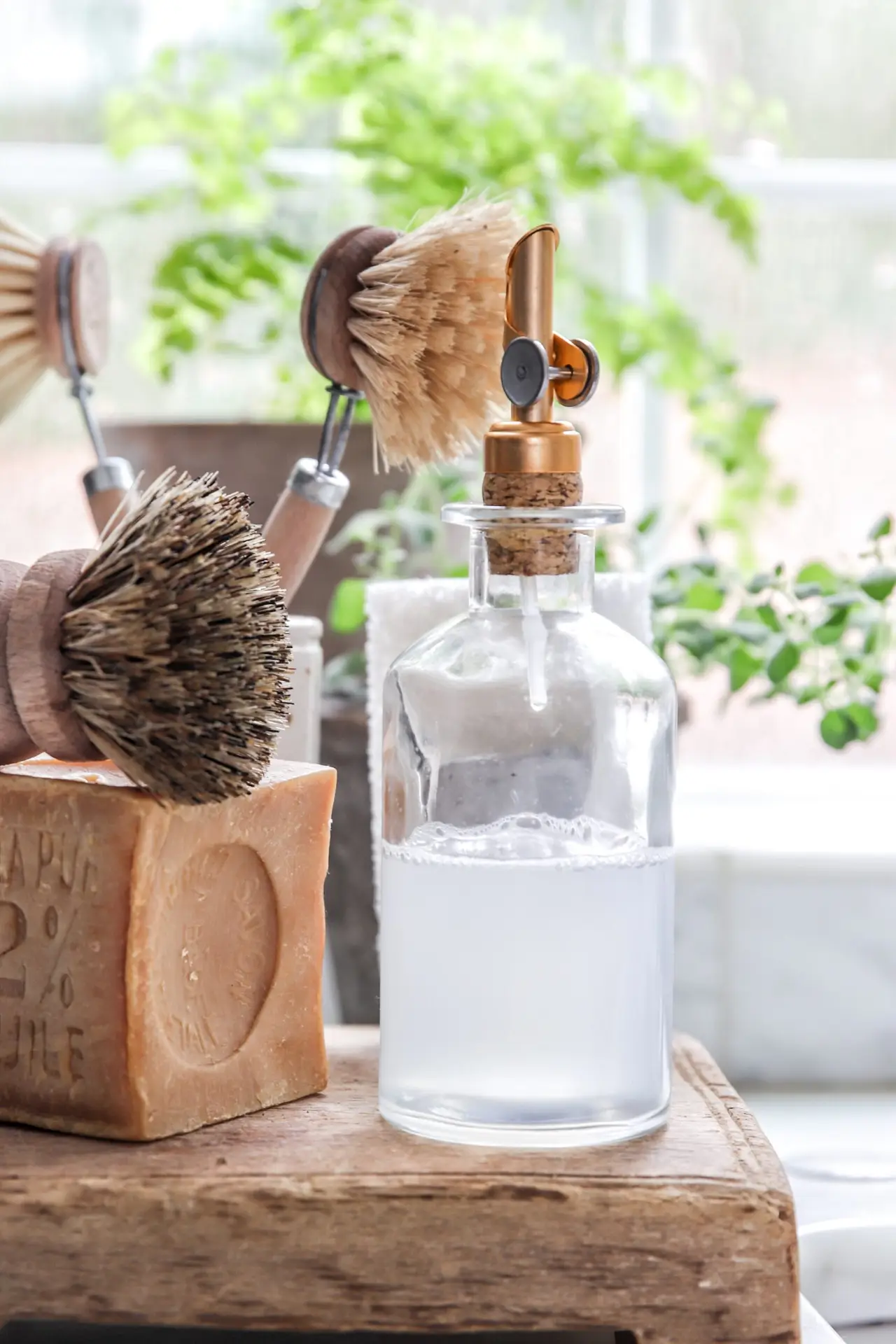When it comes to cleaning your stainless steel sink, dish soap is an essential ally. Not only does it cut through grease and grime, but it also makes the entire process simpler and more efficient. This article will guide you through every step of the cleaning and maintenance process, ensuring that your sink stays shiny and fresh for years to come.
Before Getting Started
Before diving into the cleaning process, it’s vital to prepare both yourself and your environment. A clean kitchen is not just visually appealing; it’s also a hygiene necessity. To properly clean a stainless steel sink, you need to understand what you’re working with – the materials in your sink and the substances you’ll be using.
Preparing Your Sink for Cleaning
Cleaning a sink may look straightforward, but it requires some preparation. First, clear out any items from your sink. This includes dishes, utensils, or leftover food particles that may have collected there. After emptying the sink, rinse away loose debris with warm water. This will help remove any surface dirt and prepare the sink for deeper cleaning.
Avoid using steel wool or scouring pads for this initial rinse, as they can scratch the stainless steel. Instead, use a non-scratch sponge or soft brush. These tools will allow you to gently agitate the surface without causing damage. Once the surface is clear, you’re ready to gather your cleaning supplies.
Gather Necessary Supplies
Having the right supplies on hand makes the cleaning process much smoother. Here’s a list of essential items you’ll need:
- Dish soap: Excellent for cutting through grease.
- Baking soda: Great for scrubbing tough stains.
- White vinegar: Perfect for deodorizing and disinfecting.
- Ice cubes: Can be used to clean the garbage disposal.
- A non-scratch sponge or soft brush: Protects the sink’s surface while cleaning.
- Stainless steel cleaner or polisher (like Bar Keepers Friend): Restores shine and removes water spots.
- Paper towels and microfiber cloth for drying and polishing: Ensures a streak-free finish.
- Lemon juice (optional): For additional odor-fighting power.
With these supplies gathered, you’re well-equipped to tackle the cleaning process ahead.
Essential Cleaning Techniques

Now that you’re set up, let’s delve into the various cleaning techniques that will help rejuvenate your stainless steel sink. Each method plays a crucial role in ensuring your sink gets the care it deserves.
Step-by-Step Cleaning Process
To clean your stainless steel sink effectively, follow these steps:
- Empty your sink completely: As mentioned earlier, ensure your sink is free of all items before you begin.
- Clean the garbage disposal: An often-overlooked part of the sink cleaning process is the garbage disposal. To clean it, place ice cubes along with a mixture of white vinegar and baking soda down the disposal. If you’d like, you can add lemon juice for added freshness. Run the disposal for a minute or two, which helps eliminate odors and dislodge any built-up debris. Finally, use a soft brush to scrub the interior after running the disposal.
- Scrub with dish soap: Apply a generous amount of dish soap to your non-scratch sponge or soft brush. Scrub the sink thoroughly, paying close attention to areas that tend to accumulate grime. The suds from the soap will break down grease, making it easier to clean.
- Rinse: Rinse the sink with warm water to wash away the soap and any loosened debris. Ensure there are no soap residues left behind, as they can lead to a dull appearance.
- Apply stainless steel cleaner: Follow the instructions on your preferred stainless steel cleaner (like Bar Keepers Friend). Apply it generously to the sink, faucet, and fixtures, and scrub using the non-scratch sponge. This cleaner is specialized for stainless steel and will help restore its shine.
- Let sit: Allow the cleaner to sit for about ten minutes. This gives it time to penetrate stubborn stains and enhances its effectiveness.
- Rinse and dry completely: Rinse the sink thoroughly again, ensuring all cleaning products are washed away. Dry the sink completely with a paper towel or microfiber cloth to prevent water spots.
- Polish with stainless steel polish: For an extra shine, consider finishing off with a stainless steel polish. Apply a small amount to a cloth and buff the surface lightly. This will give your sink that showroom finish, enhancing its visual appeal.
Tips for Maintaining the Shine
Keeping your sink looking pristine doesn’t just stop at deep-cleaning. Regular upkeep is vital for preventing stains and maintaining that polished look.
- Daily Rinsing: After each use, take a moment to rinse your sink with warm water. This simple act prevents buildup and keeps your sink looking cleaner for longer.
- Immediate Cleaning After Heavy Use: If you’ve used the sink heavily or it’s become particularly dirty, don’t wait until your scheduled cleaning day. Wipe it down immediately to prevent stubborn stains.
- Use a Food Catcher: Installing a food catcher in your drain can significantly reduce the quantity of debris that ends up in your disposal or sink. It’s an easy preventative measure that saves time during cleaning.
Maintaining a clean sink isn’t just about appearances; it contributes to a healthier kitchen environment.
How To Get Rid Of And Prevent Smells In A Stainless Steel Sink

A stainless steel sink can be prone to unpleasant odors, especially if food particles get trapped in the drain. Thankfully, there are effective methods to eliminate these smells and keep them at bay.
Effective Methods for Odor Elimination
Here’s how to banish unwanted odors from your stainless steel sink:
- Vinegar and Baking Soda: Combine equal parts of white vinegar and baking soda in the sink drain. This fizzy reaction helps dislodge debris and neutralize smells. Let it sit for about 10-15 minutes before rinsing with hot water.
- Ice Cubes and Salt: Pour a few ice cubes down the disposal followed by salt. The ice helps dislodge any stuck-on food, while the salt acts as a natural abrasives that flushes away residue.
- Lemon Juice: For a fresh scent, squeeze some lemon juice into the disposal and run it. Citrus has natural deodorizing properties, leaving a pleasant aroma.
These methods not only tackle existing odors but can also prevent new ones from developing.
Daily Prevention Tips
Long-term odor prevention requires consistent habits. Here are some daily tips:
- Rinse Thoroughly: Always rinse your sink after washing dishes to prevent food particles from becoming lodged in the drain.
- Avoid Overloading the Disposal: Don’t overload your garbage disposal. Doing so can cause food to get caught, leading to rancid smells.
- Use Hot Water: After washing greasy pots and pans, let hot water run down the sink for a minute. This helps flush away any lingering oils and eliminates odors.
Incorporating these habits into your daily routine will keep your sink smelling fresh and clean.
Mistakes to Avoid
While cleaning your stainless steel sink may seem straightforward, certain common mistakes can diminish your efforts and even cause damage.
Common Missteps During Cleaning
Be aware of these pitfalls:
- Using Harsh Cleaners: Many people resort to bleach or abrasive cleaners, thinking they will provide a deeper clean. However, these products can scratch the surface and create more problems than they solve. Stick to stainless steel-safe products instead.
- Neglecting Regular Maintenance: Some homeowners wait too long between cleanings, allowing grime to build up. Regular maintenance is key to keeping your sink looking great.
- Using Steel Wool: Despite its effectiveness on other surfaces, steel wool is a definite no-go for stainless steel sinks. Its abrasiveness will cause scratches that can lead to rust over time.
By avoiding these common missteps, you can protect your investment and enjoy a dazzling sink.
Avoiding Damage to Your Sink
To prolong the life of your stainless steel sink, consider these additional tips:
- Don’t Let Food Sit: Leaving food scraps to sit in the sink can lead to stains and odors. Clean up promptly after meals.
- Avoid High Temperatures: While stainless steel is durable, avoid pouring boiling water directly onto the surface without first running cold water. Sudden temperature differences can warp the metal.
- Use Soft Materials for Cleaning: Always choose non-scratch sponges or soft brushes when cleaning your sink. They provide adequate cleaning power without risking scratches.
Taking these precautions ensures your sink remains in top condition for years.
Notes
Regular maintenance and proper cleaning techniques are crucial to preserving the beauty of your stainless steel sink. In this section, we’ll talk about why these practices matter and how they benefit you.
Importance of Regular Maintenance
Stainless steel sinks require regular attention for several reasons. They are continuously exposed to moisture, food particles, and cooking oils, all of which can contribute to tarnishing and odor. By regularly rinsing and wiping down your sink, you minimize the chances of stubborn stains forming, making your cleaning days less laborious.
Moreover, consistent upkeep enhances the lifespan of your sink. When you treat your sink with care, it will likely serve you well for years, avoiding the premature wear and the need for costly replacements.
Benefits of Using Proper Cleaning Materials
Using proper cleaning materials is equally important. Many household cleaners contain chemicals that can corrode stainless steel over time, leading to discoloration and rust. By using products designed specifically for your sink, you not only maintain its appearance but also ensure that it remains hygienic and safe for food preparation.
Products like Bar Keepers Friend or specially formulated stainless steel cleaners are gentle yet effective. They help eliminate tarnishing without harming the metal, providing a deep clean that leaves your sink sparkling.
Frequently Asked Questions
As you embark on your journey to maintain and clean your stainless steel sink, you might have some questions. Below are answers to commonly asked queries that can further guide you in your cleaning endeavors.
What cleaning products should I avoid for my stainless steel sink?
It’s essential to avoid abrasive cleaners and bleach. These products can scratch the surface and harm the integrity of the steel. Stick to stainless steel-safe products for optimal results.
How do I remove rust from my stainless steel sink?
For rust removal, you can use Bar Keepers Friend or create a paste from baking soda and water. Gently rub the affected area with a non-scratch sponge, then rinse thoroughly. Regular maintenance can prevent rust from occurring.
How can I prevent water spots on my stainless steel sink?
To prevent water spots, always dry your sink after rinsing. Using a microfiber cloth for drying will significantly reduce the chances of spots appearing. Additionally, polishing your sink weekly with a stainless steel cleaner can help maintain its shine.
Conclusion
Cleaning and maintaining your stainless steel sink is essential for keeping it looking its best. With the right tools and techniques, including the use of dish soap, you can keep your sink spotless and odor-free. Regular upkeep not only enhances the aesthetic appeal of your kitchen but also contributes to a healthier cooking environment. By avoiding common mistakes and using the right cleaning products, you can extend the life of your sink and enjoy its shine for years to come. Make cleaning a fun ritual rather than a chore, and your stainless steel sink will thank you!
